
Beer is one of the oldest types of alcoholic drinks in the world, and the most widely consumed. It is the third most popular drink overall after potable water and tea. It is produced by the brewing and fermentation of starches, mainly derived from cereal grains—most commonly malted barley, though wheat, maize (corn), rice, and oats are also used. During the brewing process, fermentation of the starch sugars in the wort produces ethanol and carbonation in the resulting beer. Most modern beer is brewed with hops, which add bitterness and other flavours and act as a natural preservative and stabilising agent. Other flavouring agents such as gruit, herbs, or fruits may be included or used instead of hops. In commercial brewing, the natural carbonation effect is often removed during processing and replaced with forced carbonation.
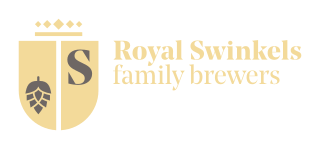
Royal Swinkels Family Brewers is a family business from North Brabant in the Netherlands, that is active in the beer, soft drink and malt sector. The company is fully owned by the Swinkels family for seven generations. The head office is located in Lieshout and there are subsidiaries in twelve countries.

The U.S. state of Oregon is home to more than 200 breweries and brew pubs that produce a large variety of beer.
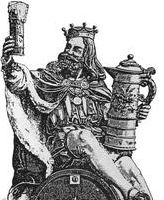
Gambrinus is a legendary European culture hero celebrated as an icon of beer, brewing, joviality, and joie de vivre. Typical representations in the visual arts depict him as a rotund, bearded duke or king, holding a tankard or mug, and sometimes with a keg nearby.

Arnold (Arnoul) of Soissons or Arnold or Arnulf of Oudenburg is a saint of the Catholic Church, the patron saint of hop-pickers, Belgian brewers.

Duvel Moortgat Brewery is a Flemish family-controlled brewery founded in 1871 in Antwerp Province, Belgium. Its strong golden pale ale, Duvel, is exported to more than forty countries. Duvel is Brabantian, Ghent and Antwerp dialect for devil, the standard Dutch word being duivel. Other popular beers include Maredsous and Vedett.

Beer in Belgium includes pale ales, lambics, Flemish red ales, sour brown ales, strong ales and stouts. In 2018, there were 304 active breweries in Belgium, including international companies, such as AB InBev, and traditional breweries including Trappist monasteries. On average, Belgians drink 68 litres of beer each year, down from around 200 each year in 1900. Most beers are bought or served in bottles, rather than cans, and almost every beer has its own branded, sometimes uniquely shaped, glass. In 2016, UNESCO inscribed Belgian beer culture on their list of the intangible cultural heritage of humanity.
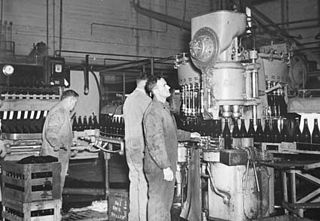
Beer arrived in Australia at the beginning of British colonisation. In 2004 Australia was ranked fourth internationally in per capita beer consumption, at around 110 litres per year; although, the nation ranked considerably lower in a World Health Organization report of alcohol consumption per capita of 12.2 litres. Lager is by far the most popular type of beer consumed in Australia.

Beer in the United States is manufactured in breweries which range in size from industry giants to brew pubs and microbreweries. The United States produced 196 million barrels (23.0 GL) of beer in 2012, and consumes roughly 28 US gallons (110 L) of beer per capita annually. In 2011, the United States was ranked fifteenth in the world in per capita consumption, while total consumption was second only to China.
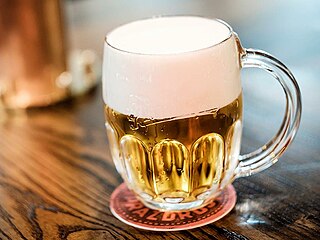
Beer has a long history in what is now the Czech Republic, with brewing taking place in Břevnov Monastery in 993. The city of Brno had the right to brew beer from the 12th century, while Plzeň and České Budějovice, had breweries in the 13th century.
Several brands of beer are produced and served in Romania, including beer from local breweries and craft beers. The history of this beverage includes the territory of the Romanian lands, since at least the times of the Romanian Old Kingdom to contemporary times.

Beer is one of the oldest human-produced drinks. The first chemically confirmed barley-beer – from the area of Mesopotamia, part of modern-day Iraq – dates back to the 5th millennium BCE. The written history of ancient Egypt and Mesopotamia records the use of beer, and the drink has spread throughout the world; a 3,900-year-old Sumerian poem honouring Ninkasi, the patron goddess of brewing, contains the oldest surviving beer-recipe, describing the production of beer from barley bread, and in China, residue on pottery dating from around 5,000 years ago shows that beer was brewed using barley and other grains.
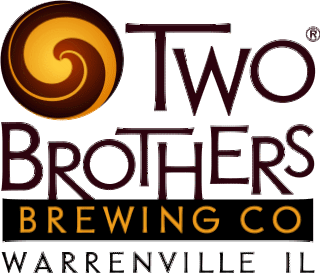
Two Brothers Brewing Company is an independently owned Illinois-based microbrewery founded by brothers Jim and Jason Ebel in 1996. The brothers brought their knowledge of different brewing styles to the Chicago craft brew market after living in Europe and experiencing the variety of beers available there. Jim and Jason started the business using bulk milk tanks converted into fermenters that were donated to them by their grandfather who was a retired dairy farmer. Two Brothers Brewing has now been in business for over 20 years and has opened multiple locations throughout the Chicago metropolitan area, as well as one in Arizona.

Alvinne is a small brewery in the hamlet of Moen near the Belgian city of Zwevegem, founded in 2002.

A brewery or brewing company is a business that makes and sells beer. The place at which beer is commercially made is either called a brewery or a beerhouse, where distinct sets of brewing equipment are called plant. The commercial brewing of beer has taken place since at least 2500 BC; in ancient Mesopotamia, brewers derived social sanction and divine protection from the goddess Ninkasi. Brewing was initially a cottage industry, with production taking place at home; by the ninth century, monasteries and farms would produce beer on a larger scale, selling the excess; and by the eleventh and twelfth centuries larger, dedicated breweries with eight to ten workers were being built.

Most beer sold in France is pilsner lager, mass-produced by major breweries which control over 90% of the market, although there are also traditional beer styles, such as top-fermented Bière de Garde, and a number of microbreweries.

John Martin is the name of a beer brewery in Genval, Belgium, founded in 1909 by English businessman John Martin (1886-1966). A family company, it is currently run by his grandson, Anthony Martin. Besides brewing Belgian-style ales, the company also imports British and Irish beers, and produces soft drinks for Schweppes under license. It is the oldest Guinness distributor in the world.

San Diego County, California, has been called "the Craft Beer Capital of America". As of 2018, the county was home to 155 licensed craft breweries – the most of any county in the United States. Based on 2016 sales volume, three San Diego County breweries – Stone, Green Flash, and Karl Strauss – rank among the 50 largest craft brewers in the United States. San Diego County brewers pioneered the specialty beer style known as Double India Pale Ale, sometimes called San Diego Pale Ale. Its beer culture is a draw for tourism, particularly during major festivals such as San Diego Beer Week and the San Diego International Beer Competition. San Diego County breweries including Stone Brewing Co., AleSmith Brewing Company and Ballast Point Brewing Company are consistently rated among the top breweries in the world.
The Aarschotse Stadsbrouwerij, located in the city of Aarschot, Belgium, is an initiative of the city's governing body in collaboration with local brewing-enthusiasts.
Herkenrode is a Belgian abbey beer brewed by the Cornelissen Brewery at Opitter in Bree, Limburg, named after the former Herkenrode Abbey in Hasselt.

















